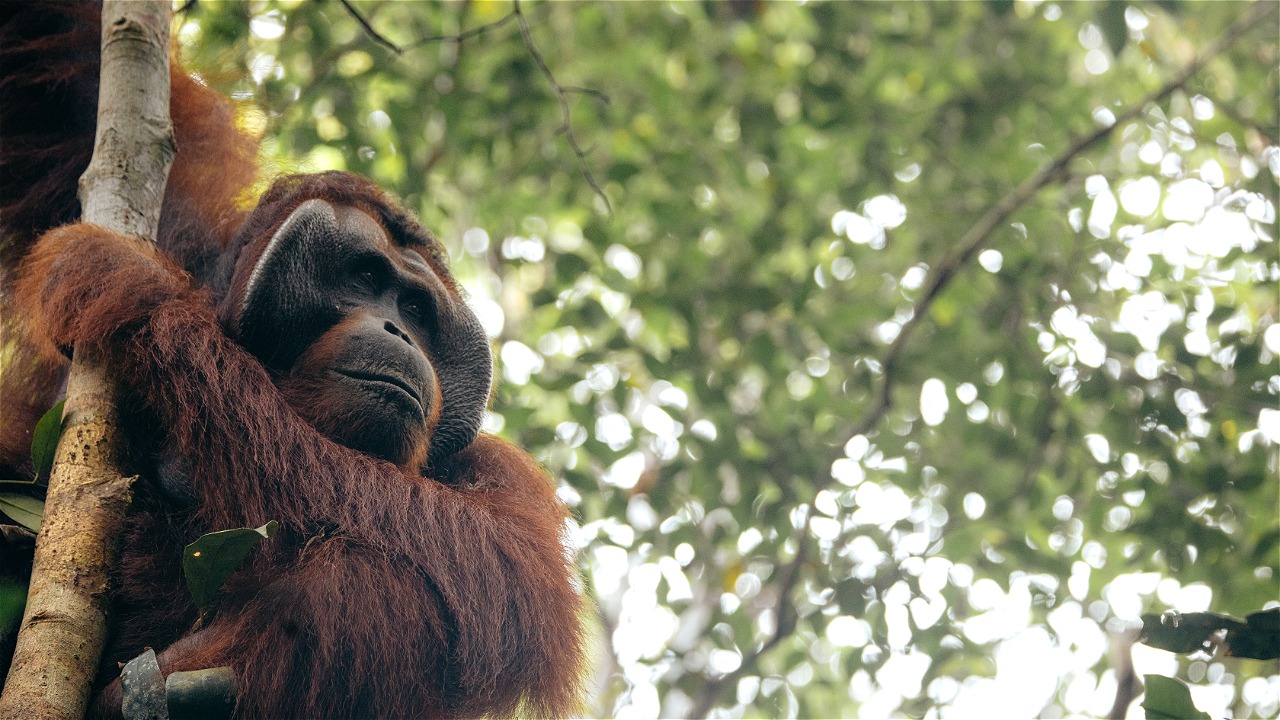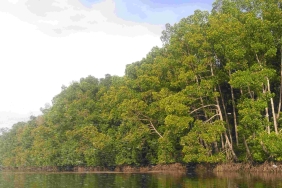GET TO KNOW INDONESIAN ORANGUTANS BETTER
By: Nur Arinta
Orangutans are one of the most similar great ape species to humans, as 97 percent of orangutan DNA is similar to that of humans. Orangutans are also the only great ape not native to Africa, but to Asia, specifically Southeast Asia.
In Indonesia, there are two species of orangutans that exist, namely the Bornean Orangutan (Pongo pygmaeus) and the Sumatran Orangutan (Pongo abelii), of course there are some differences between the Bornean Orangutan and the Sumatran Orangutan. Curious? Let's continue reading this article.
Based on genetic studies, Bornean orangutans have been identified as having three subspecies, namely Pongo pygmaeus pygmaeus found in northwest Borneo, Pongo pygmaeus wrumbii found in central Borneo, and Pongo pygmaeus morio found in northeast Borneo. When compared, of these three subspecies, P.p. wrumbii is the largest orangutan subspecies, while P.p. morio is the smallest of the three.
The facial shape of adult male orangutans is one of the things that can show the differences between Bornean and Sumatran orangutans. Male orangutans that have entered the adult phase will have cheek pads and vocal sacs. Bornean orangutans have flared cheek pads that make their overall face look round, while Sumatran orangutans have drooping cheek pads that make their face look oval. In addition, the Sumatran Orangutan's chin also looks longer.
Apart from facial shape, body size can also show the difference between Sumatran and Bornean Orangutans. So far, male Sumatran Orangutans have a maximum weight of 90 kg. Meanwhile, male Bornean Orangutans are larger, weighing a maximum of 150 kg. While the weight of female orangutans is smaller, which is around 30-50 kg or equal to one-third the weight of males.
The color and fur of the Sumatran Orangutan is lighter when compared to the Bornean Orangutan, where the Sumatran Orangutan is slightly orange brown and the Bornean Orangutan tends to be dark brown. The coat of the Sumatran Orangutan also tends to be thicker than its Bornean sibling.
Both live in lowland tropical rainforests, swamps, and mountain forests. However, based on research, Sumatran Orangutans consume more fruits than Bornean Orangutans, which have a more diverse diet, ranging from fruits, leaf shoots, to insects. This is because the fruit season in Sumatra is longer, so the availability of fruit is more abundant. In obtaining their food, it is not uncommon to find Orangutans using pieces of twigs to pick up fruit. This shows the high level of intelligence possessed by this great ape.
The number of predators in Sumatra, such as Sumatran tigers and tigers, compared to Borneo also affects the behavior of these two great apes. Sumatran orangutans tend to spend more of their lives up in the trees and hanging from one tree to another. Their smaller bodies are also thought to aid their tree-dwelling behavior.
Unlike its siblings, the Bornean Orangutan is often found at ground level.
In 2004, orangutan experts estimated the total Bornean Orangutan population on the island of Borneo to be around 54,000 individuals, and of the three subspecies, P.p. pygmaeus was the least populous at around 3,000 to 4,500 individuals. This equates to eight percent of the total orangutan population across Borneo. With this population size, the Bornean Orangutan is in Endangered/EN status according to the IUCN (world conservation organization).
Even more concerning than its siblings in Borneo. There are 13 orangutan population pockets in Sumatra, and of these pockets, it is likely that only three contain around 500 individuals and seven contain over 250 individuals. Currently, the Sumatran orangutan population is estimated to only contain around 6500 individuals, putting it at Critically Endangered (CR) status according to the IUCN. In fact, the IUCN states that over the last 75 years the Sumatran Orangutan population has decreased by as much as 80 percent.
Orangutans are protected under national law, based on Law Number 5 of 1990 concerning the Conservation of Living Natural Resources and Ecosystems and Government Regulation Number 7 of 1999 concerning the Preservation of Plant and Animal Species. Not only that, at the international level orangutans have Appendix I status in CITES, a convention that regulates species trade in the world. That means, orangutans are not a species that can be traded.
Some time ago, good news came about the discovery of a new species of orangutan, the Tapanuli Orangutan (Pongo tapanuliensis). Experts in conservation genomics, biology, morphology, ecology, and primate behavior have agreed on the existence of this new species of great ape. This orangutan is the third species after the Sumatran orangutan, and the Bornean orangutan. It is rumored that this species can only be found in the Batang Toru landscape of North Sumatra, which includes highland forests spread across three regencies in Tapanuli. What distinguishes this orangutan from other species is its curly hair and whiskers. Unfortunately, the population of this orangutan is said to be very small, at only around 800 individuals.
Although there are many differences between the Sumatran, Bornean and Tapanuli orangutans, they face the same and very serious threats, namely habitat loss, illegal logging, forest fires, and the hunting and trade of orangutans for pets. Forests that serve as habitat for orangutans continue to be degraded year after year and converted into agriculture, plantations, mining, and settlements. This activity certainly makes many orangutans lose their homes and causes a decline in population.
So what can be done for people who live in urban areas? As urbanites, we can take actions to support orangutan conservation to maintain their existence in nature. The trick is to be a wise consumer by buying environmentally friendly certified products. In addition, we can also report to the local police or BKSDA or through reporting applications such as Wildscan, GAKKUM, or e-Reporting of Protected Animals issued by Bareskrim POLRI, if we find orangutan poaching and trafficking practices.





